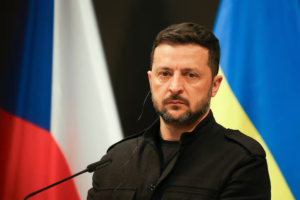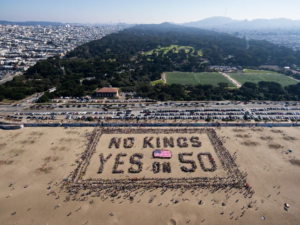The fragile ceasefire in Gaza has shattered, reigniting a devastating conflict that has claimed hundreds of lives in just a few days. Israeli airstrikes and ground operations have intensified, targeting what the military describes as militant strongholds, while Palestinian health officials report a rising death toll, including women and children. This article delves into the latest developments, the human cost of the conflict, and the broader implications for the region.
The Breakdown of the Ceasefire
The recent escalation began after a ceasefire brokered in January collapsed. The truce had allowed for the release of hostages and provided a brief respite for Gaza’s beleaguered population. However, Israel resumed heavy strikes on Tuesday, accusing Hamas of rejecting a new proposal that deviated from the terms of the earlier agreement.
Hamas, on the other hand, insists that it will only release the remaining hostages in exchange for a lasting ceasefire and a full Israeli withdrawal from Gaza. This stalemate has plunged the region back into violence, with no end in sight.
The Human Cost: A Night of Tragedy

Overnight strikes across Gaza have left at least 85 Palestinians dead, according to local health officials. Among the casualties were entire families, including men, women, and children, many of whom were killed in their sleep.
The Abu Daqa Family Tragedy
One of the most devastating strikes hit the home of the Abu Daqa family in Abasan al-Kabira, a village near Khan Younis. The attack killed 16 people, including a father and his seven children. A month-old baby survived but lost her parents and brother in the blast.
“Another tough night,” said Hani Awad, a local resident helping rescuers search for survivors. “The house collapsed over the people’s heads.”
Beit Lahiya: A Town Under Siege
The northern town of Beit Lahiya, already heavily damaged in earlier phases of the war, suffered another “bloody night.” Strikes killed dozens, and rescuers worked tirelessly to pull survivors from the rubble.
“The situation is catastrophic,” said Fares Awad, head of the Health Ministry’s emergency service in northern Gaza.
Israel’s Military Operations
The Israeli military has defended its actions, stating that it targeted militant infrastructure and fighters. It also announced a renewed blockade on northern Gaza, including Gaza City, and warned residents against using the main highway. Only the coastal road is open for passage to the south.
Ground Troops Advance
For the first time since the January ceasefire, Israeli ground troops have advanced into Gaza, seizing part of the Netzarim corridor—a strategic area separating the northern and southern regions of the territory. This move signals Israel’s intent to intensify its operations until Hamas releases the remaining hostages and relinquishes control of Gaza.
Intercepting Missiles
In a separate development, the Israeli military intercepted a missile launched by Yemen’s Iran-backed Houthi rebels before it reached Israeli airspace. This marks the second such attack since the U.S. began airstrikes against the Houthis earlier this week.
The Broader Context: A 17-Month War
The current conflict traces back to October 7, 2023, when Hamas-led militants stormed into southern Israel, killing approximately 1,200 people and taking 251 hostages. Israel’s retaliatory offensive has been one of the deadliest and most destructive in recent history, with nearly 49,000 Palestinians killed, according to Gaza’s Health Ministry.
Displacement and Destruction
At its peak, the war displaced around 90% of Gaza’s population. Although many returned to their homes during the ceasefire, they often found only rubble and devastation. The renewed fighting threatens to displace thousands more, exacerbating an already dire humanitarian crisis.
The Role of International Actors
The Trump administration, which played a key role in brokering the January ceasefire, has voiced full support for Israel. Meanwhile, Hamas has called for international mediation to secure a lasting peace, insisting on a full Israeli withdrawal from Gaza as a precondition for any agreement.
The Humanitarian Crisis
The resumption of hostilities has deepened the humanitarian crisis in Gaza. Israel’s blockade has cut off essential supplies, including food, fuel, and medical aid, leaving Gaza’s 2 million residents in desperate need. Hospitals are overwhelmed, and rescue workers struggle to cope with the scale of the destruction.
Calls for Aid

International organizations have urged both sides to prioritize civilian safety and allow humanitarian aid to reach those in need. However, with the conflict escalating, the prospects for relief remain bleak.
The Path Forward: Is Peace Possible?
The renewed violence underscores the deep-rooted tensions between Israel and Hamas. While both sides have expressed a willingness to negotiate, their conditions for peace remain far apart.
Hamas’s Demands
Hamas insists on a lasting ceasefire and a full Israeli withdrawal from Gaza. It has also proposed transferring power to the Western-backed Palestinian Authority or an independent committee but refuses to disarm until Israel ends its occupation of Palestinian territories.
Israel’s Stance
Israel, for its part, has vowed to continue its operations until Hamas releases all hostages and no longer poses a threat. The Israeli government has also rejected calls for a full withdrawal, citing security concerns.
Lessons from the Conflict
The ongoing war in Gaza highlights the devastating consequences of prolonged conflict and the urgent need for a sustainable resolution. Key lessons include:
- The Importance of Diplomacy
Temporary ceasefires, while providing short-term relief, are not enough to address the root causes of the conflict. Lasting peace requires meaningful dialogue and compromise. - Protecting Civilians
The high civilian death toll underscores the need for all parties to prioritize the protection of non-combatants and adhere to international humanitarian law. - Addressing Humanitarian Needs
The blockade and destruction of infrastructure have left Gaza’s population in dire straits. Immediate humanitarian aid is essential to prevent further suffering.
Final Thoughts: A Call for Peace
The renewed violence in Gaza is a stark reminder of the human cost of war. As the conflict escalates, the international community must redouble its efforts to broker a lasting peace. Civilians on both sides deserve to live in safety and dignity, free from the fear of violence and destruction.
While the path to peace is fraught with challenges, it is not impossible. By prioritizing dialogue, compassion, and a commitment to justice, we can work toward a future where both Israelis and Palestinians can coexist in peace.




